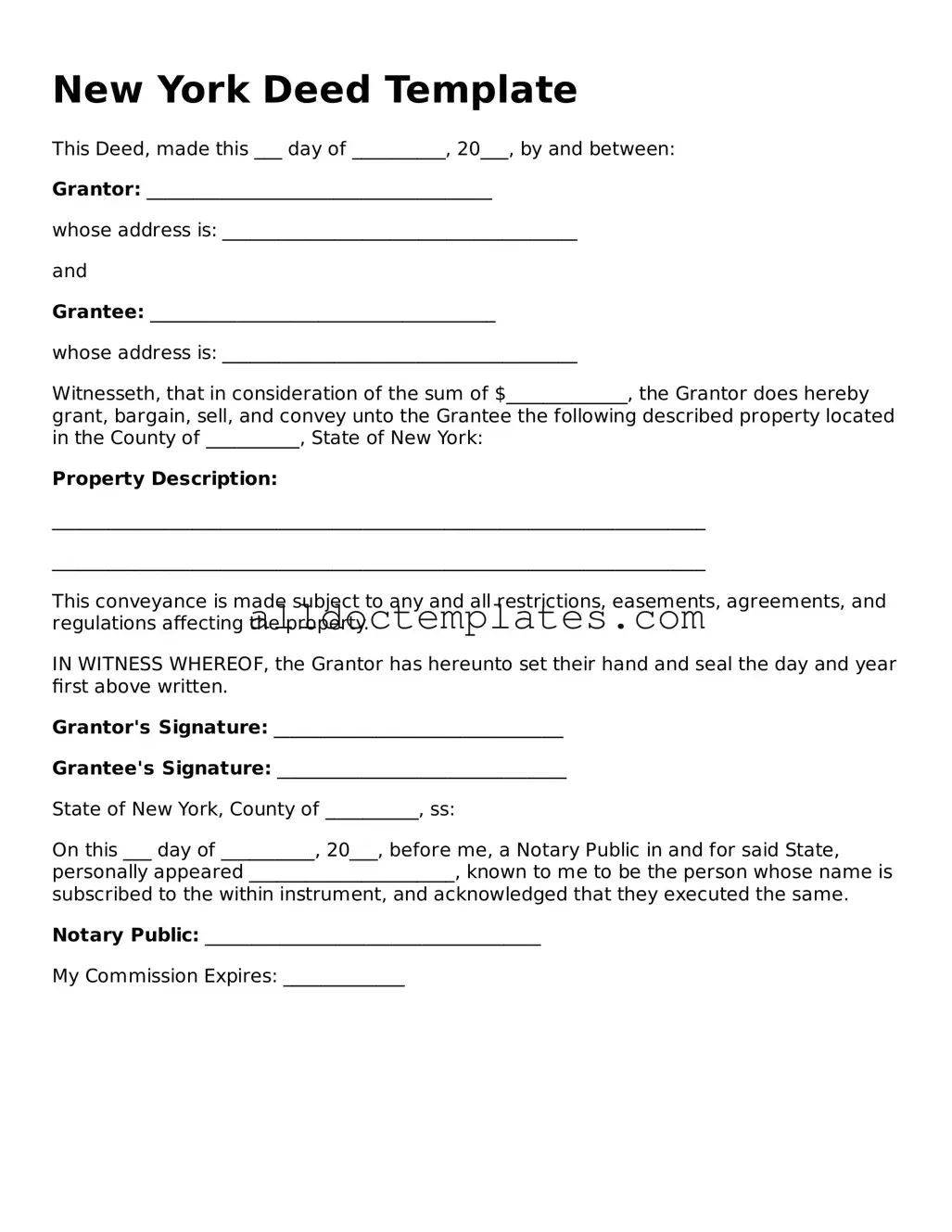New York Deed Template
This Deed, made this ___ day of __________, 20___, by and between:
Grantor: _____________________________________
whose address is: ______________________________________
and
Grantee: _____________________________________
whose address is: ______________________________________
Witnesseth, that in consideration of the sum of $_____________, the Grantor does hereby grant, bargain, sell, and convey unto the Grantee the following described property located in the County of __________, State of New York:
Property Description:
______________________________________________________________________
______________________________________________________________________
This conveyance is made subject to any and all restrictions, easements, agreements, and regulations affecting the property.
IN WITNESS WHEREOF, the Grantor has hereunto set their hand and seal the day and year first above written.
Grantor's Signature: _______________________________
Grantee's Signature: _______________________________
State of New York, County of __________, ss:
On this ___ day of __________, 20___, before me, a Notary Public in and for said State, personally appeared ______________________, known to me to be the person whose name is subscribed to the within instrument, and acknowledged that they executed the same.
Notary Public: ____________________________________
My Commission Expires: _____________
